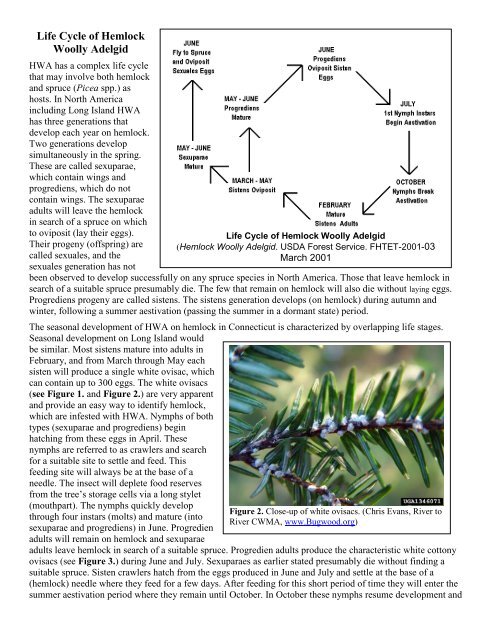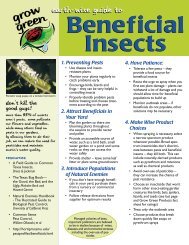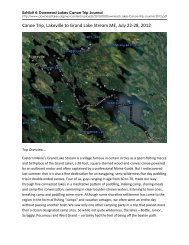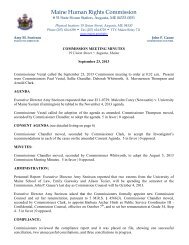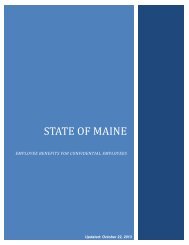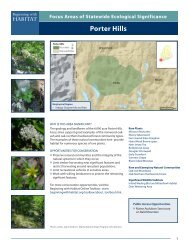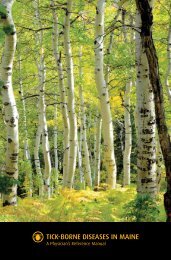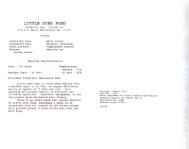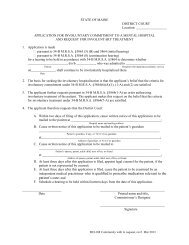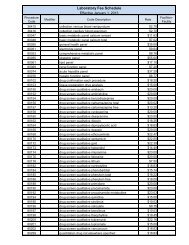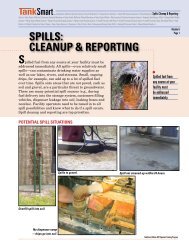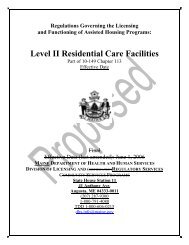Fact Sheet: Hemlock Woolly Adelgid - Maine.gov
Fact Sheet: Hemlock Woolly Adelgid - Maine.gov
Fact Sheet: Hemlock Woolly Adelgid - Maine.gov
You also want an ePaper? Increase the reach of your titles
YUMPU automatically turns print PDFs into web optimized ePapers that Google loves.
Life Cycle of <strong>Hemlock</strong><br />
<strong>Woolly</strong> <strong>Adelgid</strong><br />
HWA has a complex life cycle<br />
that may involve both hemlock<br />
and spruce (Picea spp.) as<br />
hosts. In North America<br />
including Long Island HWA<br />
has three generations that<br />
develop each year on hemlock.<br />
Two generations develop<br />
simultaneously in the spring.<br />
These are called sexuparae,<br />
which contain wings and<br />
progrediens, which do not<br />
contain wings. The sexuparae<br />
adults will leave the hemlock<br />
in search of a spruce on which<br />
to oviposit (lay their eggs).<br />
Their progeny (offspring) are<br />
called sexuales, and the<br />
sexuales generation has not<br />
been observed to develop successfully on any spruce species in North America. Those that leave hemlock in<br />
search of a suitable spruce presumably die. The few that remain on hemlock will also die without laying eggs.<br />
Progrediens progeny are called sistens. The sistens generation develops (on hemlock) during autumn and<br />
winter, following a summer aestivation (passing the summer in a dormant state) period.<br />
The seasonal development of HWA on hemlock in Connecticut is characterized by overlapping life stages.<br />
Seasonal development on Long Island would<br />
be similar. Most sistens mature into adults in<br />
February, and from March through May each<br />
sisten will produce a single white ovisac, which<br />
can contain up to 300 eggs. The white ovisacs<br />
(see Figure 1. and Figure 2.) are very apparent<br />
and provide an easy way to identify hemlock,<br />
which are infested with HWA. Nymphs of both<br />
types (sexuparae and progrediens) begin<br />
hatching from these eggs in April. These<br />
nymphs are referred to as crawlers and search<br />
for a suitable site to settle and feed. This<br />
feeding site will always be at the base of a<br />
needle. The insect will deplete food reserves<br />
from the tree’s storage cells via a long stylet<br />
(mouthpart). The nymphs quickly develop<br />
through four instars (molts) and mature (into<br />
sexuparae and progrediens) in June. Progredien<br />
adults will remain on hemlock and sexuparae<br />
Life Cycle of <strong>Hemlock</strong> <strong>Woolly</strong> <strong>Adelgid</strong><br />
(<strong>Hemlock</strong> <strong>Woolly</strong> <strong>Adelgid</strong>. USDA Forest Service. FHTET-2001-03<br />
March 2001<br />
Figure 2. Close-up of white ovisacs. (Chris Evans, River to<br />
River CWMA, www.Bugwood.org)<br />
adults leave hemlock in search of a suitable spruce. Progredien adults produce the characteristic white cottony<br />
ovisacs (see Figure 3.) during June and July. Sexuparaes as earlier stated presumably die without finding a<br />
suitable spruce. Sisten crawlers hatch from the eggs produced in June and July and settle at the base of a<br />
(hemlock) needle where they feed for a few days. After feeding for this short period of time they will enter the<br />
summer aestivation period where they remain until October. In October these nymphs resume development and


